Leonardo M. Millefiori
Monitoring of Underwater Critical Infrastructures: the Nord Stream and Other Recent Case Studies
Feb 03, 2023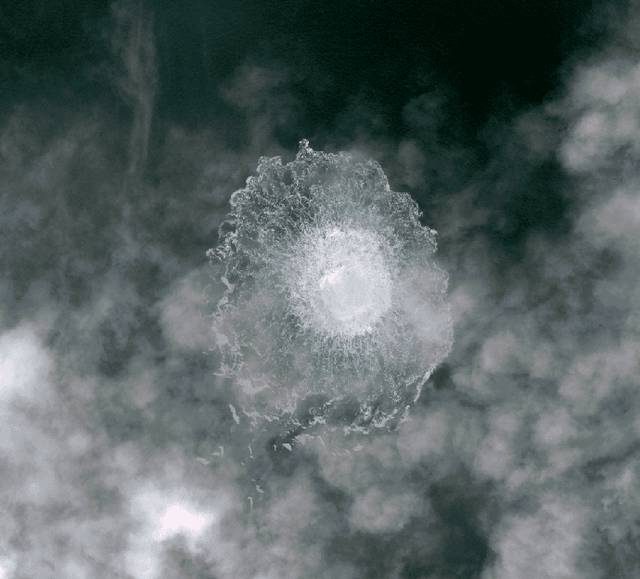

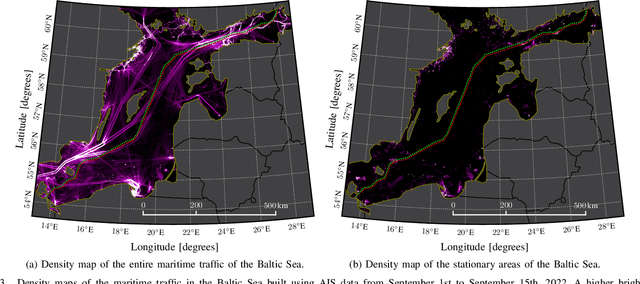

Abstract:The explosions on September 26th, 2022, which damaged the gas pipelines of Nord Stream 1 and Nord Stream 2, have highlighted the need and urgency of improving the resilience of Underwater Critical Infrastructures (UCIs). Comprising gas pipelines and power and communication cables, these connect countries worldwide and are critical for the global economy and stability. An attack targeting multiple of such infrastructures simultaneously could potentially cause significant damage and greatly affect various aspects of daily life. Due to the increasing number and continuous deployment of UCIs, existing underwater surveillance solutions, such as Autonomous Underwater Vehicles (AUVs) or Remotely Operated Vehicles (ROVs), are not adequate enough to ensure thorough monitoring. We show that the combination of information from both underwater and above-water surveillance sensors enables achieving Seabed-to-Space Situational Awareness (S3A), mainly thanks to Artificial Intelligence (AI) and Information Fusion (IF) methodologies. These are designed to process immense volumes of information, fused from a variety of sources and generated from monitoring a very large number of assets on a daily basis. The learned knowledge can be used to anticipate future behaviors, identify threats, and determine critical situations concerning UCIs. To illustrate the capabilities and importance of S3A, we consider three events that occurred in the second half of 2022: the aforementioned Nord Stream explosions, the cutoff of the underwater communication cable SHEFA-2 connecting the Shetland Islands and the UK mainland, and the suspicious activity of a large vessel in the Adriatic Sea. Specifically, we provide analyses of the available data, from Automatic Identification System (AIS) and satellite data, integrated with possible contextual information, e.g., bathymetry, weather conditions, and human intelligence.
Large Deviations for Classification Performance Analysis of Machine Learning Systems
Jan 16, 2023Abstract:We study the performance of machine learning binary classification techniques in terms of error probabilities. The statistical test is based on the Data-Driven Decision Function (D3F), learned in the training phase, i.e., what is thresholded before the final binary decision is made. Based on large deviations theory, we show that under appropriate conditions the classification error probabilities vanish exponentially, as $\sim \exp\left(-n\,I + o(n) \right)$, where $I$ is the error rate and $n$ is the number of observations available for testing. We also propose two different approximations for the error probability curves, one based on a refined asymptotic formula (often referred to as exact asymptotics), and another one based on the central limit theorem. The theoretical findings are finally tested using the popular MNIST dataset.
Statistical Hypothesis Testing Based on Machine Learning: Large Deviations Analysis
Jul 22, 2022
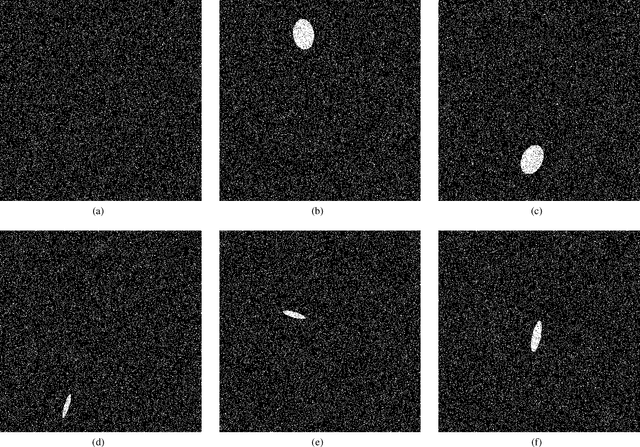

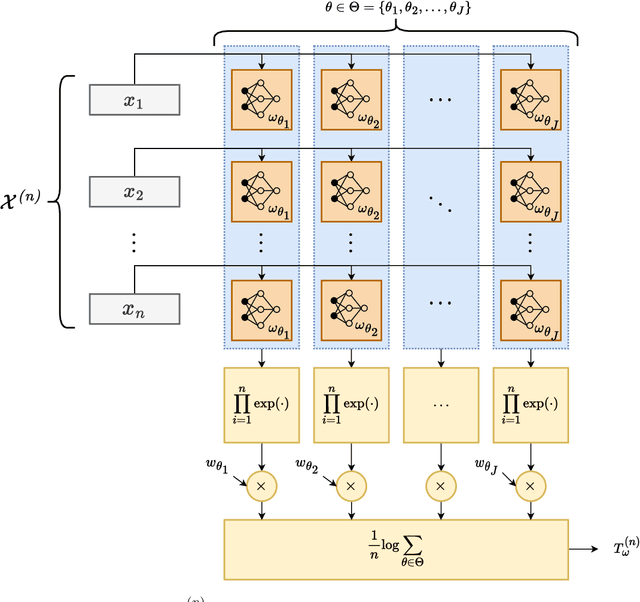
Abstract:We study the performance -- and specifically the rate at which the error probability converges to zero -- of Machine Learning (ML) classification techniques. Leveraging the theory of large deviations, we provide the mathematical conditions for a ML classifier to exhibit error probabilities that vanish exponentially, say $\sim \exp\left(-n\,I + o(n) \right)$, where $n$ is the number of informative observations available for testing (or another relevant parameter, such as the size of the target in an image) and $I$ is the error rate. Such conditions depend on the Fenchel-Legendre transform of the cumulant-generating function of the Data-Driven Decision Function (D3F, i.e., what is thresholded before the final binary decision is made) learned in the training phase. As such, the D3F and, consequently, the related error rate $I$, depend on the given training set, which is assumed of finite size. Interestingly, these conditions can be verified and tested numerically exploiting the available dataset, or a synthetic dataset, generated according to the available information on the underlying statistical model. In other words, the classification error probability convergence to zero and its rate can be computed on a portion of the dataset available for training. Coherently with the large deviations theory, we can also establish the convergence, for $n$ large enough, of the normalized D3F statistic to a Gaussian distribution. This property is exploited to set a desired asymptotic false alarm probability, which empirically turns out to be accurate even for quite realistic values of $n$. Furthermore, approximate error probability curves $\sim \zeta_n \exp\left(-n\,I \right)$ are provided, thanks to the refined asymptotic derivation (often referred to as exact asymptotics), where $\zeta_n$ represents the most representative sub-exponential terms of the error probabilities.
Recurrent Encoder-Decoder Networks for Vessel Trajectory Prediction with Uncertainty Estimation
May 11, 2022

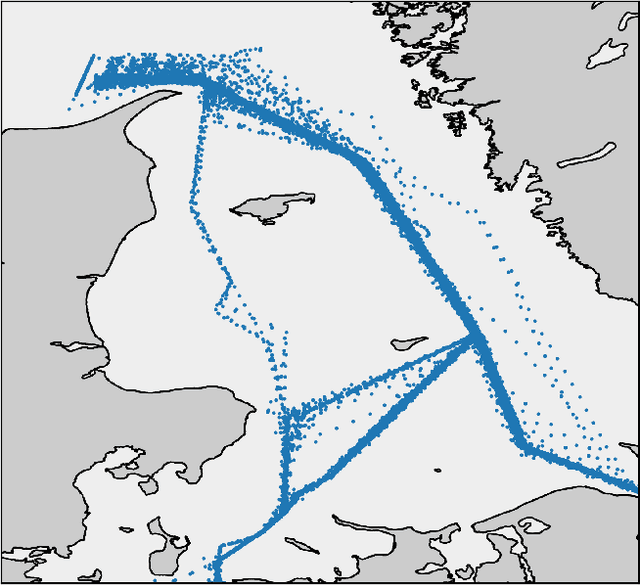
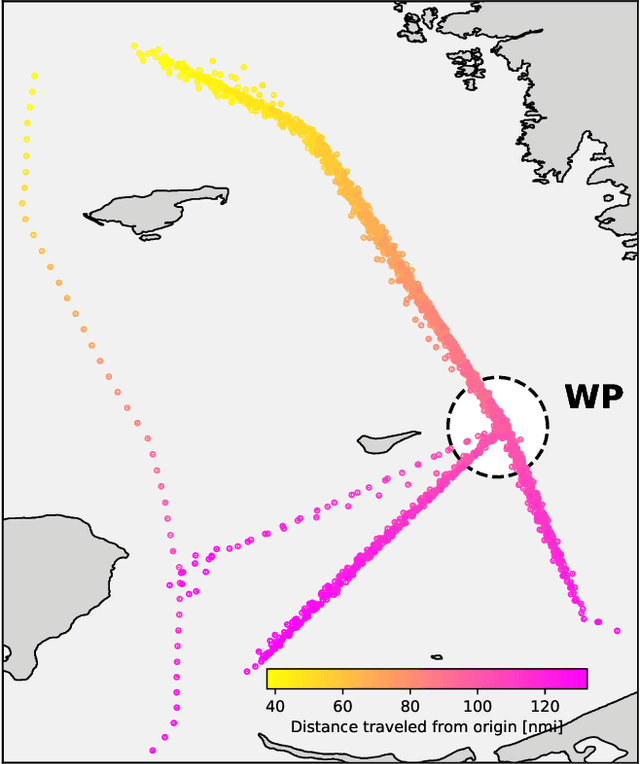
Abstract:Recent deep learning methods for vessel trajectory prediction are able to learn complex maritime patterns from historical Automatic Identification System (AIS) data and accurately predict sequences of future vessel positions with a prediction horizon of several hours. However, in maritime surveillance applications, reliably quantifying the prediction uncertainty can be as important as obtaining high accuracy. This paper extends deep learning frameworks for trajectory prediction tasks by exploring how recurrent encoder-decoder neural networks can be tasked not only to predict but also to yield a corresponding prediction uncertainty via Bayesian modeling of epistemic and aleatoric uncertainties. We compare the prediction performance of two different models based on labeled or unlabeled input data to highlight how uncertainty quantification and accuracy can be improved by using, if available, additional information on the intention of the ship (e.g., its planned destination).
Quickest Detection and Forecast of Pandemic Outbreaks: Analysis of COVID-19 Waves
Jan 12, 2021

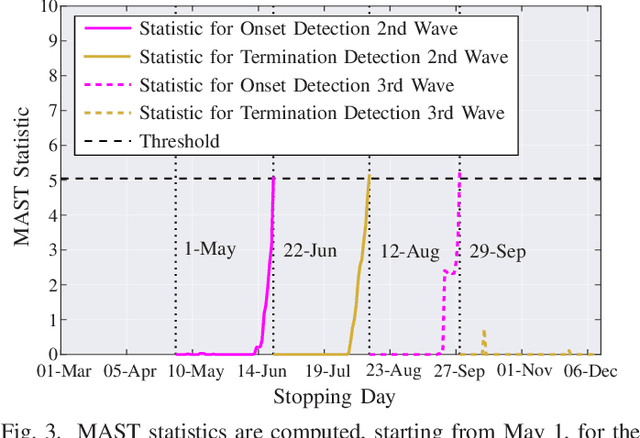
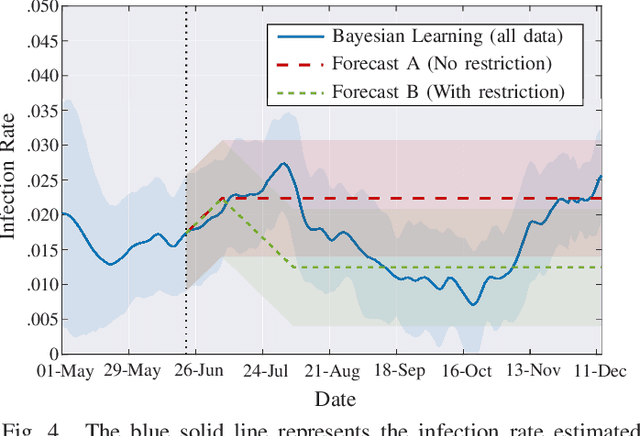
Abstract:The COVID-19 pandemic has, worldwide and up to December 2020, caused over 1.7 million deaths, and put the world's most advanced healthcare systems under heavy stress. In many countries, drastic restriction measures adopted by political authorities, such as national lockdowns, have not prevented the outbreak of new pandemic's waves. In this article, we propose an integrated detection-estimation-forecasting framework that, using publicly available data published by the national authorities, is designed to: (i) learn relevant features of the epidemic (e.g., the infection rate); (ii) detect as quickly as possible the onset (or the termination) of an exponential growth of the contagion; and (iii) reliably forecast the epidemic evolution. The proposed solution is validated by analyzing the COVID-19 second and third waves in the USA.
Deep Learning Methods for Vessel Trajectory Prediction based on Recurrent Neural Networks
Jan 07, 2021


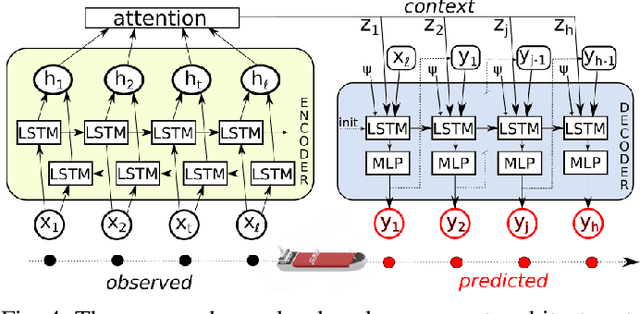
Abstract:Data-driven methods open up unprecedented possibilities for maritime surveillance using Automatic Identification System (AIS) data. In this work, we explore deep learning strategies using historical AIS observations to address the problem of predicting future vessel trajectories with a prediction horizon of several hours. We propose novel sequence-to-sequence vessel trajectory prediction models based on encoder-decoder recurrent neural networks (RNNs) that are trained on historical trajectory data to predict future trajectory samples given previous observations. The proposed architecture combines Long Short-Term Memory (LSTM) RNNs for sequence modeling to encode the observed data and generate future predictions with different intermediate aggregation layers to capture space-time dependencies in sequential data. Experimental results on vessel trajectories from an AIS dataset made freely available by the Danish Maritime Authority show the effectiveness of deep-learning methods for trajectory prediction based on sequence-to-sequence neural networks, which achieve better performance than baseline approaches based on linear regression or feed-forward networks. The comparative evaluation of results shows: i) the superiority of attention pooling over static pooling for the specific application, and ii) the remarkable performance improvement that can be obtained with labeled trajectories, i.e. when predictions are conditioned on a low-level context representation encoded from the sequence of past observations, as well as on additional inputs (e.g., the port of departure or arrival) about the vessel's high-level intention which may be available from AIS.
 Add to Chrome
Add to Chrome Add to Firefox
Add to Firefox Add to Edge
Add to Edge